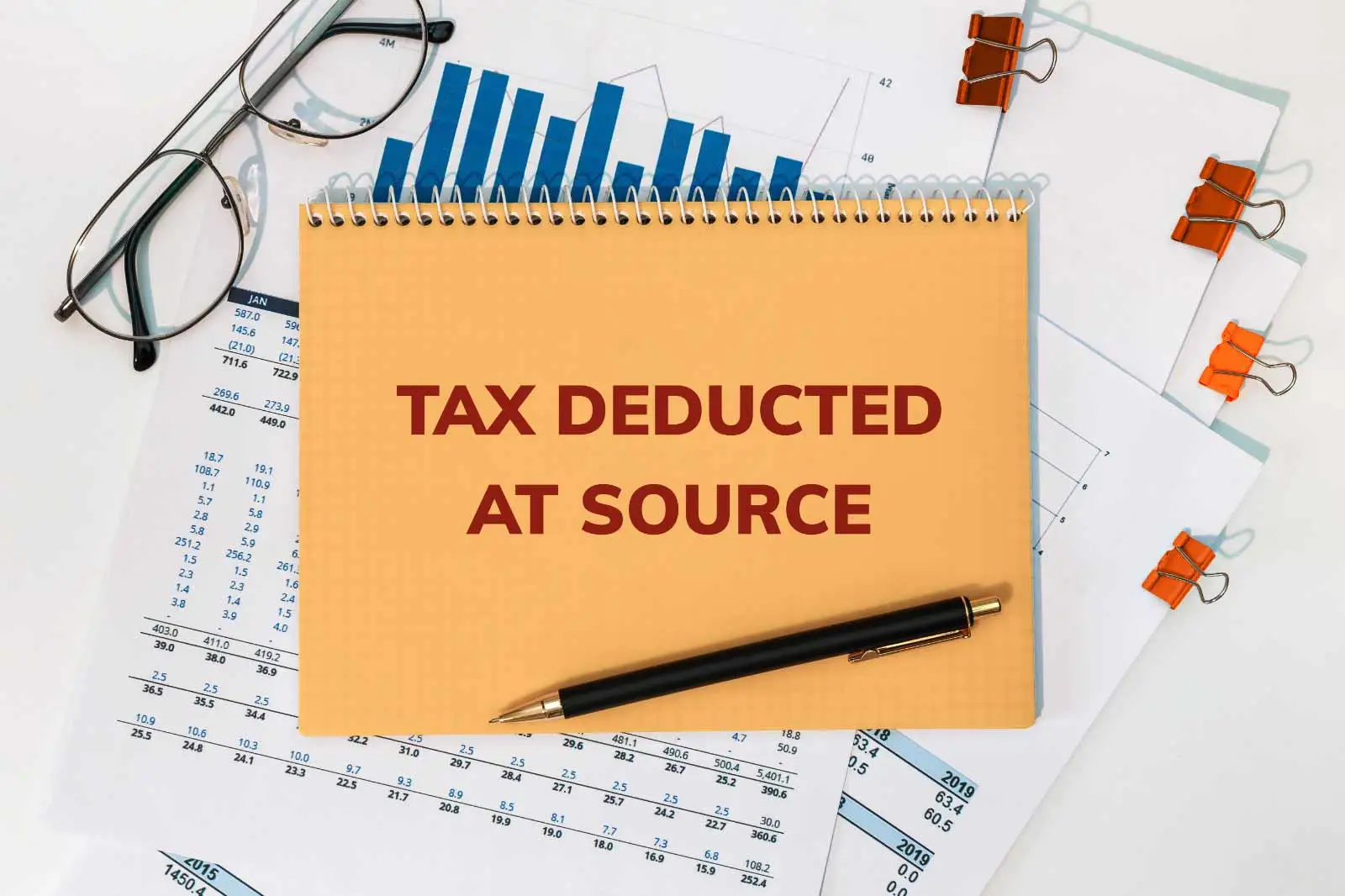The below content is purely for informational purposes and is not intended to constitute advisory of any kind. Please note, these are in-depth articles which are best viewed on large screen devices like laptops, desktops and tablets. The position reflected in this article has been updated as of October 15, 2024.
Non-Resident Indians (NRIs)/Persons of Indian Origin (PIOs)/Overseas Citizens of India (OCIs) often invest in Indian real estate. The sale of such property involves tax considerations, such as Tax Deducted at Source (TDS). This article elaborates on the implications of TDS for NRIs selling property in India.
TDS on NRI property transactions
As an NRI, you can sell your residential or commercial properties to any resident Indian or another NRI/OCI. If you have inherited an agricultural property, you can sell it to resident Indians only. Regardless of the property type (residential, commercial or agricultural), the sale of real estate in India by NRIs is subject to TDS as per the Income Tax (IT) Act, 1961.
While making the payment, the buyer of the property is obligated to withhold a predetermined portion of applicable tax from the sale proceeds and deposit it with Indian government. After that, you, the seller (NRI), will be eligible to claim a credit for such TDS while filing your income tax return in which you report capital gains in India. Please note, even if the buyer is another NRI/PIO/OCI or any other person, the same process needs to be followed.
Determining the applicable TDS rate
The rate of TDS applicable on the sale of property depends upon multiple factors, including:
- Whether the gain is a Long-Term Capital Gain (LTCG) or a Short-Term Capital Gain (STCG): If you have held the property for more than 24 months, it will be considered an LTCG; otherwise, it will be regarded as an STCG
- Whether you have opted for the old or new tax regime
- Your applicable IT slab
- Availability of a Lower Tax Deduction Certificate (LDC)
Please note, in the case of properties inherited by an NRI, prior ownership would also be considered a part of the holding period to determine the LTCG and STCG.
The table below summarises the effective rate of TDS for different income levels of NRIs in India and the type of capital gains.
Please note, tables are best viewed on desktops or in landscape mode on mobile phones. On mobile phones, please swipe to view all content.
| Particulars | Effective rate of TDS for different level of income (LTCG) | ||
|---|---|---|---|
| Total income is less than ₹50 lakh | Total income is between ₹50 lakh and ₹1 crore | Total income is more than ₹1 crore | |
Capital gain tax rate |
12.5% without indexation |
12.5% without indexation |
12.5% without indexation |
Add: Surcharge |
Nil |
10% of the above tax |
15% of the above tax |
Total tax rate |
12.5% |
13.75% |
14.375% |
Add: Health and Education cess |
4% of the total tax rate |
4% of the total tax rate |
4% of the total tax rate |
Effective TDS rate |
13% |
14.3% |
14.95% |
Please note, tables are best viewed on desktops or in landscape mode on mobile phones. On mobile phones, please swipe to view all content.
| Particulars | Effective rate of TDS for different level of income (STCG) | ||
|---|---|---|---|
| Total income is less than ₹50 lakh | Total income is between ₹50 lakh and ₹1 crore | Total income is more than ₹1 crore | |
Capital gain tax rate |
30% |
30% |
30% |
Add: Surcharge |
Nil |
10% of the above tax |
15% of the above tax |
Total tax rate |
30% |
33% |
34.5% |
Add: Health and Education cess |
4% of the total tax rate |
4% of the total tax rate |
4% of the total tax rate |
Effective TDS rate |
31.2% |
34.32% |
35.88% |
For a detailed explanation of how to determine the amount of capital gains on the sale of immovable property, click here

Did you know?
Just like resident Indians, NRIs selling property in India can avail tax exemptions on LTCG as per Section 54, IT Act 1961. To qualify, you must reinvest the sale proceeds in another residential property in India, specific government bonds with certain characteristics or other assets, within a specific timeframe.
Reducing the TDS liability with LDC
While your overall tax liability remains the same, you can reduce your TDS payout as an NRI. You can have a lower TDS rate, thereby reducing your TDS amount.
Before the sale transaction, you can register on the TRACES portal and apply online for an LDC in Form 13 along with the requisite documentation to the Income Tax Assessing Officer (AO) in India. You will have to justify a lower tax burden to the AO by disclosing:
- Any LTCG/STCG from the sale transaction; and
- Your estimated total income in India for the current year
Once approved, the AO will issue an LDC for a specified period pertaining to the transaction. You should ensure the validity of the LDC throughout the duration of the sale transaction.
Alternatively, the buyer can also reach out to the AO seeking the applicable TDS rate (LDC) for the seller prior to the sale transaction.
Please note, if neither the buyer nor the seller obtains the certificate, then the buyer will compute the TDS, considering the entire sale consideration as capital gain and at the maximum rate of TDS.
Let’s understand how an LDC can reduce TDS with the help of an illustration.
Scenario 1: LDC not taken
Amit, an NRI, sold a plot in Mumbai to a resident, Rahul, for ₹1.5 crore in July 2023. Amit had purchased the plot in January 2020. Since the plot qualifies as a long-term capital asset (held for more than 24 months), the applicable TDS rate will be 20%, along with the applicable surcharge and cess. Amit did not seek an LDC from the AO. Accordingly, Rahul, the buyer, computed TDS on the entire sale consideration of ₹1.5 crore.
The TDS computation is illustrated below:
Please note, tables are best viewed on desktops or in landscape mode on mobile phones. On mobile phones, please swipe to view all content.
| Particulars | Amount (₹) | |
|---|---|---|
A |
Sale consideration |
1,50,00,000 |
B |
Tax rate@ 12.5% on (A) |
18,75,000 |
C |
Surcharge @ 15% on (B) |
2,81,250 |
D |
Total tax (C) = (A) + (B) |
21,56,250 |
E |
Health and Education cess (D) = 4% on (C) |
86,250 |
F |
Total TDS (E) = (C) + (D) |
22,42,500 |
TDS rate (F) = (E) / (A) |
14.95% |
|
Hence, Rahul, the buyer, will deduct ₹22,42,500 as TDS from the sale consideration.
Scenario 2: LDC is taken, and TDS is deducted at a lesser rate:
Let’s look at the scenario where Amit had obtained an LDC from the AO. Since Amit purchased the plot in January 2020 for ₹1.2 crore and disclosed the same to the AO, the AO will consider the indexed cost of acquisition for determining the capital gains.
The indexed cost of acquisition will be computed as per the formula outlined below:
In the present case, the property was acquired for ₹1.2 crore, establishing its cost of acquisition at ₹1.2 crore. The acquisition occurred in the year 2020, and the property was subsequently transferred to Rahul in 2023. The CII for the year 2020 was 289, and for 2023, it was 348. Therefore, for the purposes of calculating capital gains tax, the CII of 289 will be applied to the year of acquisition (2020), and the CII of 348 will be applied to the year of transfer (2023). Accordingly,
Once you arrive at the indexed cost of acquisition, the AO will use the LDC to arrive at the reduced TDS rate as per the computation outlined below:
Please note, tables are best viewed on desktops or in landscape mode on mobile phones. On mobile phones, please swipe to view all content.
| Particulars | Amount (₹) | |
|---|---|---|
A |
Sale consideration |
1,50,00,000 |
B |
Less: cost of Acquisition |
1,20,00,000 |
C |
Capital gain (A-B) |
30,00,000 |
D |
Tax rate @ 12.5% on (C) |
3,75,000 |
E |
Health and Education cess @ 4% on (D) |
15,000 |
F |
Total TDS (D) + (E) |
3,90,000 |
TDS rate as per LDC (F/A) |
2.6% |
|
**Refer to the relevant CII according to the indexation chart updated as per the Finance Act, 2024: Cost Inflation Index (incometaxindia.gov.in)
Amit then shared the LDC with Rahul, and accordingly, Rahul deducted the TDS at a rate of 2.6% from the sale consideration.
Please note that Amit’s overall tax liability in either of the scenarios remains the same. However, using an LDC, he can have a lower TDS rate and reduce his upfront tax outflow. He can save by ₹18,52,500(₹22,42,500- ₹ 3,90,000) on the sale of his immovable property
Ensuring TDS compliance as a seller
While the buyer is responsible for deducting the TDS from the sale proceeds, as a seller, you should ensure compliance from your end as well. This includes:
- Declaration of your residential status at the time of sale of property
- Obtaining a TDS certificate (Form 16A) from the buyer within 15 days of filing the TDS return
- Reconciliation of the TDS amount reflected in Form 26AS with the TDS certificate (Form 16A)
- Claiming TDS credit (if any) as reflected in form 26AS when you file your Indian tax return
Consequences of non-compliance
Both parties involved in the transaction may face consequences for non-compliance with TDS regulations. The buyer risks facing penalties and interest fees for delayed TDS deposits, while the seller may experience delays in repatriating the sale proceeds to the overseas country as funds cannot be repatriated unless taxes are paid. To learn more about repatriating sale proceeds from property sales in India, click here.
Please note, misrepresenting residency status to evade TDS obligations could result in legal repercussions. Thus, sellers must ensure that buyers comply with TDS regulations.
Impact of Double Taxation Avoidance Agreements (DTAA)
As an NRI, you can avail of DTAA benefits as per the mutual agreement between India and your country of residence. Most countries, including the United States do not provide DTAA benefits on the sale of property. You should consult a tax professional or legal advisor for more details.

Conclusion
Understanding TDS is crucial when selling property in India as an NRI. You can reduce your immediate tax burden by applying for an LDC. While the principal responsibility of TDS compliance resides with the buyer, as a seller, you should ensure a true representation of your residency status and transparency in your sale transaction. For more details on the computation of TDS, you should consult a tax expert.
This is sample bottom text
Recommended For You
Disclaimer:
The contents of this article/infographic are meant solely for informational purposes. The contents are generic in nature and are not intended to serve as a substitute for specific advice on any matter whatsoever. The information is subject to updation, completion and verification and the applicable norms may keep changing materially from time to time. This information is also not intended for distribution or use by any person in any jurisdiction where such distribution or use would be contrary to applicable laws or would subject ICICI Bank Limited/its affiliates to any licensing or registration requirements. ICICI Bank Limited/its affiliates and their representatives shall not be liable for any direct or indirect losses or liability incurred arising in connection with any decision taken by any person on the basis of this content. Please conduct your own due diligence and consult your financial advisor before making any decision. Terms and conditions of ICICI Bank and third parties apply. ICICI Bank is not responsible for third party services. Nothing contained herein shall constitute or be deemed to constitute an advice, invitation or solicitation to avail any products/services of third parties.



 ICICI Smart Assistant
ICICI Smart Assistant








_RGB.png)












-help-an-nri-oci-pio.webp)








